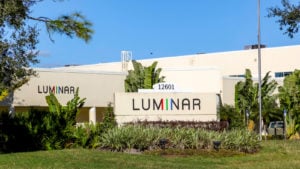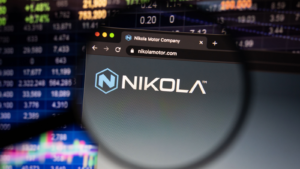The autonomous vehicle industry, characterized by its high-tech allure, is currently navigating through turbulent waters. Investors initially flocked to this sector, enchanted by the futuristic vision of self-driving cars and AI-driven efficiency gains. However, reality has started to set in, revealing significant challenges that include technological limitations, regulatory hurdles, and unexpected market dynamics.
Autonomous driving is poised to grow significantly, potentially generating between $300-$400 billion in revenue by 2035. However, despite the expected growth, not all companies are in a good position to benefit from the industry’s expansion.
As we move into July, it’s crucial for investors to reassess their holdings in this sector. The hype surrounding autonomous vehicles has often led to inflated valuations and overlooked risks. Now, with the industry’s growth trajectory proving more gradual and fraught than anticipated, a correction seems imminent for some companies. Hence, here are three 3 Autonomous Vehicle Stocks to Sell in July Before They Crash & Burn.
Luminar (LAZR)

Luminar (NASDAQ:LAZR) has faced significant challenges over the past year, with its stock plummeting nearly 55% in 2024.
The company’s operational losses are equally alarming. In Q1 alone, Luminar recorded a staggering operating loss of $125 million, which was approximately six times the revenue it generated during the period. Such disproportionate losses highlight severe inefficiencies and underline the precarious nature of Luminar’s financial footing.
In response to these challenges, Luminar has initiated several strategic measures aimed at reducing costs and optimizing its production capabilities. This includes a 20% reduction in its workforce and the outsourcing of its Iris LIDAR sensor production, which is expected to save the company approximately $80 million annually in run-rate savings.
Despite these efforts, Luminar’s cash burn remains a critical concern. The company is expected to deplete an additional large sum of cash by the end of 2024, pressuring it to secure further financing.
Nikola (NKLA)

Nikola (NASDAQ:NKLA) continues to face significant challenges, as reflected in its recent quarterly earnings.
Despite delivering 40 fuel cell trucks in Q1, Nikola encountered setbacks with an $8.0 million return reserve stemming from canceled dealer agreements, pointing to ongoing struggles in maintaining sales momentum and dealer confidence.
The company’s gross margin dipped to an all-time low. This financial strain was mirrored in Nikola’s cash reserves, which saw a substantial quarter-over-quarter decrease of approximately $120 million.
For 2024, Nikola has moderated its ambitions, now projecting the delivery of 300-350 fuel cell trucks. This adjusted forecast reflects a cautious but more realistic approach, given the current market dynamics and internal challenges.
In a bid to reshape its trajectory, Nikola’s management, under new CFO Thomas Okray, is shifting focus towards securing large national accounts. This strategic pivot is aimed at achieving the scale necessary for profitability. The company is targeting fleets larger than a thousand trucks, hoping that initial leniency in deal economics will foster long-term customer relationships and bolster fleet confidence in Nikola’s offerings.
ChargePoint (CHPT)

ChargePoint (NYSE:CHPT) has continued to face a plethora of problems, leading to a 35% YTD (year-to-date) decline in the stock price.
The core of ChargePoint’s struggle lies in its business model, which heavily relies on selling hardware with limited margins and an underperforming software service that has not scaled as needed.
The company has recently reported its FY Q1 2025 financial results. The earnings report was underwhelming reflecting the broader economic challenges and sector-specific headwinds. The company’s attempts to adapt to a fiercely competitive and rapidly evolving market have not yet stabilized its financial performance.
ChargePoint reported revenue of $107 million for the quarter, marking an 18% decline from the same period last year. This decrease was notably stark in the Networked Charging Systems segment, which plummeted by 34%.
Despite beating the modest expectations set by analysts, the company’s guidance for FQ2 remains tepid, with projected revenues of $108 to $118 million.
On the date of publication, Mohammed Saqib did not hold (either directly or indirectly) any positions in the securities mentioned in this article. The opinions expressed in this article are those of the writer, subject to the InvestorPlace.com Publishing Guidelines.
On the date of publication, the responsible editor did not have (either directly or indirectly) any positions in the securities mentioned in this article.
